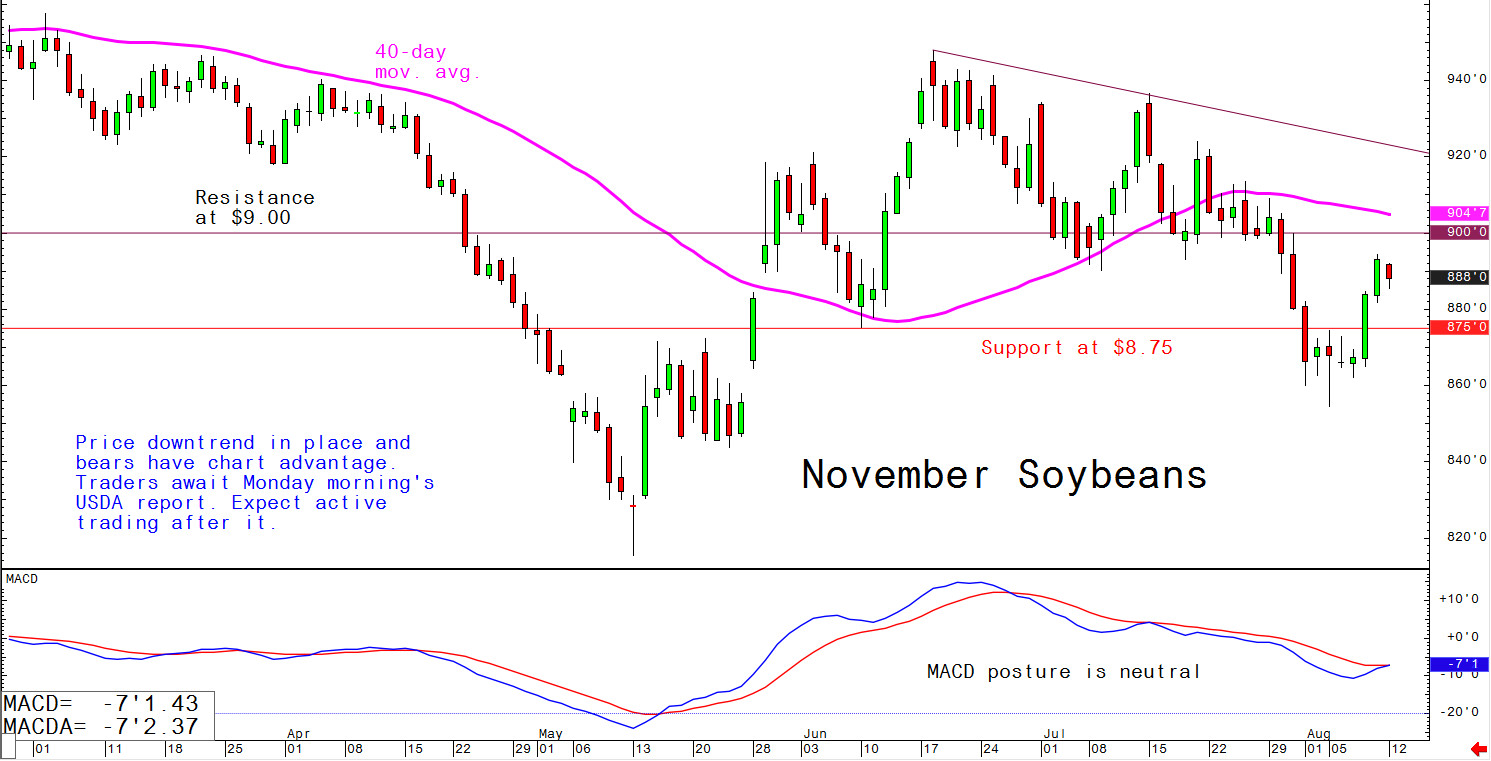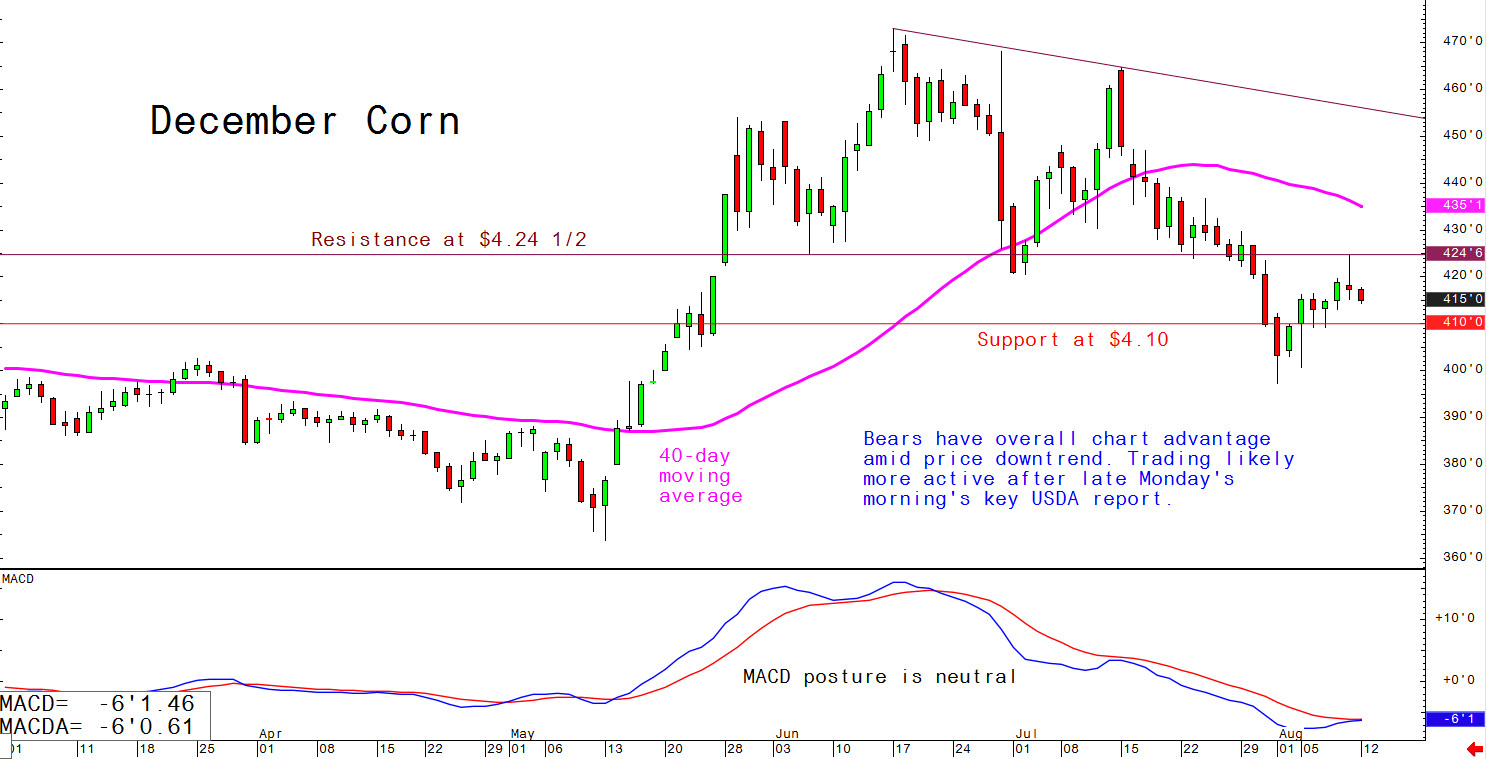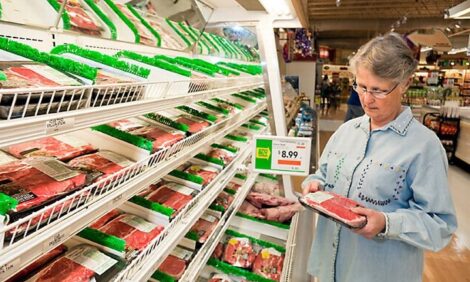



Daily US grain report: biggest report of late-summer on deck
US grain futures prices were lower in overnight trading, on risk aversion in the marketplace to start the trading week and on non-threatening weather in the US Midwest.Corn was down around 3 cents, soybeans down around 5 cents and wheat off 3 to 4 cents.
The most important USDA report of late summer is due out Monday morning - the August USDA supply and demand report, to be released 12:00 noon EDT. The trade estimates US planted corn acreage at around 88 million with an average yield of around 165 bushels per acre. Total US corn production is seen at just over 13 billion bushels. US soybean planted acreage is estimated at around 81 million with an average yield of around 48 bushels per acre and US production at 3.8 billion bushels. US ending corn stocks are seen at 1.6 billion bushels for the 2019/20 marketing year, at 820 million bushels for soybeans, and around 1 billion bushels for US wheat.

© Jim Wyckoff
The USDA weekly crop progress report today sees traders looking at the US corn condition rating at 56 percent good to excellent versus 57 percent in the same category last week. The US soybean condition rating is forecast at 53 percent good to excellent versus 54 percent last week.

© Jim Wyckoff
Corn Belt weather this week sees temperatures rising a bit, but with scattered rainfall expected in the region. It's nearing mid-August now, and the window is closing on any heat/dry stress developing for the soybean crops. The next major weather threat would be an early frost in the Corn Belt.









